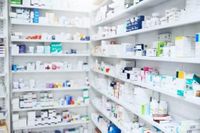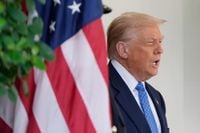In a move that could reshape the U.S. pharmaceutical landscape, the Trump administration is weighing tariffs as high as 250% on imported drugs and their ingredients, a dramatic escalation in its ongoing campaign to bolster domestic manufacturing and reduce reliance on foreign suppliers. The announcement, made on August 14, 2025, by White House trade adviser Peter Navarro, signals a new front in the administration’s aggressive approach to trade and national security.
Navarro, speaking in a televised CNBC interview, emphasized the urgency of the situation: “It’s very clear that we have a national security crisis due to U.S. reliance on foreign producers in the sector.” He confirmed that a Section 232 trade investigation is underway, a rarely used legal tool that allows the government to impose tariffs if imports are deemed a threat to national security, according to Reuters. While Navarro did not specify a timeline for the probe, he indicated that the administration was moving quickly to address what it sees as a structural weakness in America’s pharmaceutical supply chain.
The numbers underscore the administration’s concern. Only about 10% of active pharmaceutical ingredients (APIs)—the biologically active components essential to drug manufacturing—are produced domestically, even though nearly two in five finished prescription drugs are made in the U.S., as reported by Benzinga. The rest come largely from countries like India and China, raising fears in Washington about potential vulnerabilities in the event of geopolitical tensions or supply disruptions.
President Donald Trump’s recent executive order seeks to address these vulnerabilities head-on. The order directs the Assistant Secretary for Preparedness and Response (ASPR) to work with scientific agencies and the president’s economic and homeland security advisors to compile, within 30 days, a list of approximately 26 medicines considered most critical to national health and security. The ASPR is also tasked with determining how much existing funding can be used to open the Strategic Active Pharmaceutical Ingredients Reserve (SAPIR) repository and secure a six-month supply of APIs for those medicines.
The SAPIR, created during Trump’s first term, is designed to stockpile APIs—substances that are not only cheaper but also have longer shelf lives than finished drug products. Navarro explained that filling the SAPIR would help reduce America’s dependence on foreign suppliers, including nations considered adversarial, and encourage more domestic production. “For decades Americans have been reliant on foreign supply of key pharmaceutical products,” said U.S. Secretary of Commerce Howard Lutnick on August 14. “President Trump and our nation’s new tariff policies are focused on ending this structural weakness.”
Under the proposed plan, tariffs on imported pharmaceuticals would start small, increase to 150%, and eventually reach 250% within 12 to 18 months from August 2025. The steepest rate—250%—would be the highest the administration has floated for any sector, according to Benzinga. Navarro argued that these tariffs would prevent cheap imports from India and China from flooding the American market, creating a level playing field for U.S. manufacturers and incentivizing companies to bring production back home.
To further support domestic producers, Trump’s executive order sets minimum prices for U.S. drug ingredient makers through long-term contracts, ensuring steady demand. Navarro described these contracts as “strategic,” designed to guarantee that American companies have both the market and the incentive to ramp up production of critical ingredients.
However, the administration’s tariff strategy has sparked intense debate among economists, industry leaders, and consumer advocates. On the same day as Navarro’s remarks, the Bureau of Labor Statistics reported that wholesale prices rose 0.9% in July—the fastest pace in three years. Many analysts attributed the jump to the costs tied to Trump’s sweeping tariffs, particularly as businesses grapple with higher prices for imported goods.
During an appearance on CNBC’s “Money Movers,” Navarro was pressed by anchor Sara Eisen on whether tariffs should be seen as price hikes or tax cuts. Navarro insisted, “I say they’re tax cuts.” Eisen pushed back, noting that “many economists would say they’re tax hikes, because ultimately, a consumer will pay for some of those increased prices.” Navarro acknowledged the debate but dismissed economic consensus: “The problem with most economists is they got it wrong the first time around. Just spectacularly wrong. So, who has credibility here? The Trump administration or ‘the economists’? I mean, come on.”
Most economists, as reported by NJ.com, maintain that tariffs function as a tax on imported goods, costs that are typically absorbed by companies or passed along to consumers. Major brands such as Procter & Gamble and Hershey have warned that tariffs could drive up prices on everyday household items and snacks. The Yale Budget Lab, a nonpartisan policy research center, estimated earlier this month that Trump’s new tariff rates—which took effect starting August 7—will cost the average family about $2,400 in 2025. Meanwhile, companies like Ford have said their profits for the year are expected to fall as a result of the tariffs.
The political fallout from these economic pressures has been swift. Trump recently fired Erika McEntarfer, the head of the Bureau of Labor Statistics, following a weak jobs report that showed hiring had slowed in July and was weaker in May and June than initially recorded. The president has nominated economist E.J. Antoni, a longtime critic of the bureau, as the new commissioner. Antoni has already faced scrutiny for suggesting the agency suspend its monthly jobs report, a move that has stirred controversy among economists and policymakers alike.
Despite the criticism and uncertainty, the administration appears undeterred. Navarro reiterated that the Section 232 investigation is proceeding, though official and industry sources told Reuters that the administration is still weeks away from announcing the results and any potential new tariffs. The typical timeline for a Section 232 investigation is about a year, meaning tariffs on drug imports may not take effect until late 2025 at the earliest.
Meanwhile, the pharmaceutical industry is reacting to the shifting landscape. AstraZeneca recently announced plans to invest $50 billion in the United States by 2030, a move that some see as a direct response to the administration’s push for domestic production. Whether other companies will follow suit remains to be seen, but the stakes are high for both industry and consumers as the debate over tariffs, supply chains, and drug prices continues to unfold.
As the administration presses forward, Americans are left to weigh the costs and benefits of a strategy that aims to secure the nation’s medicine cabinet—even if it means paying a higher price at the pharmacy counter.

